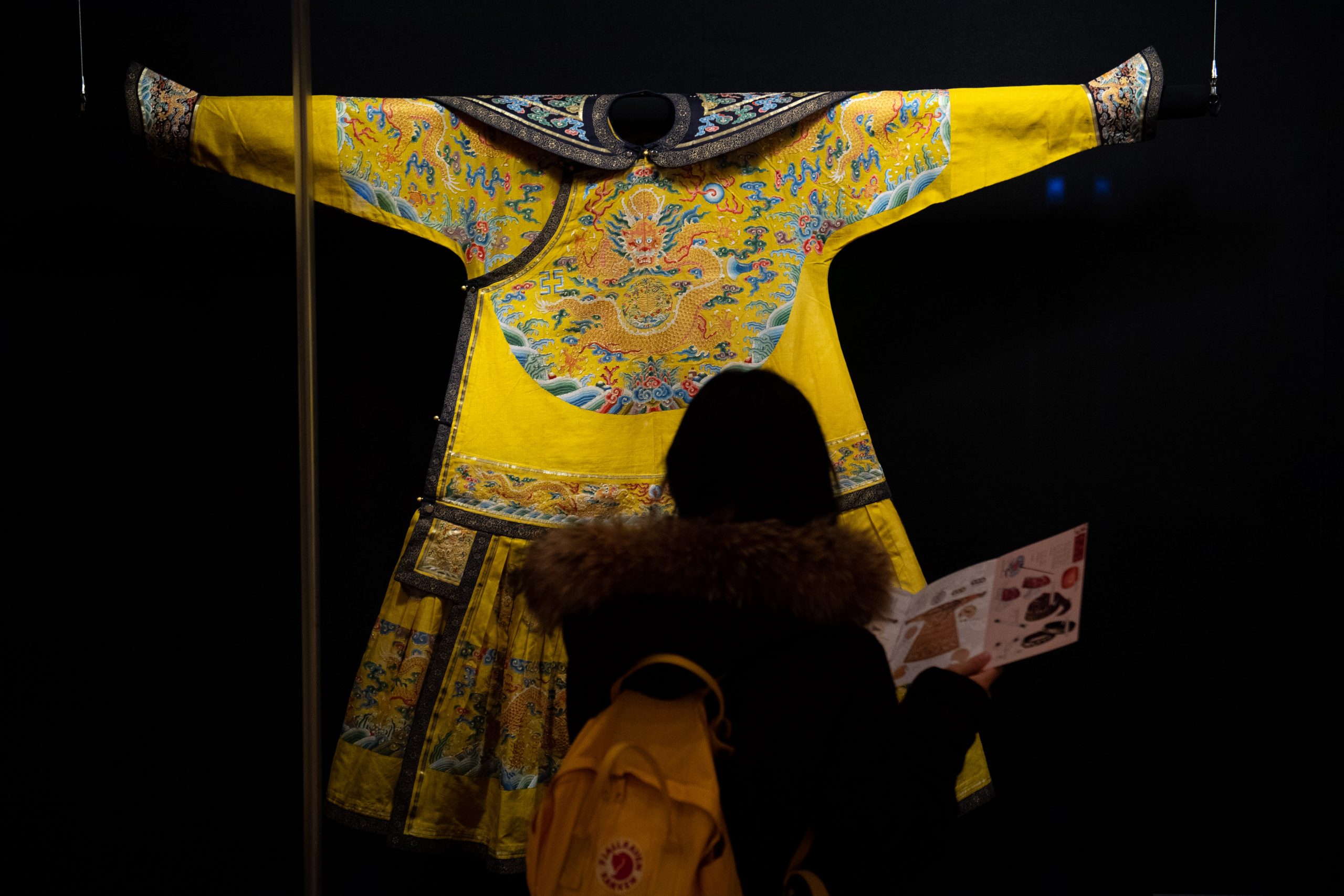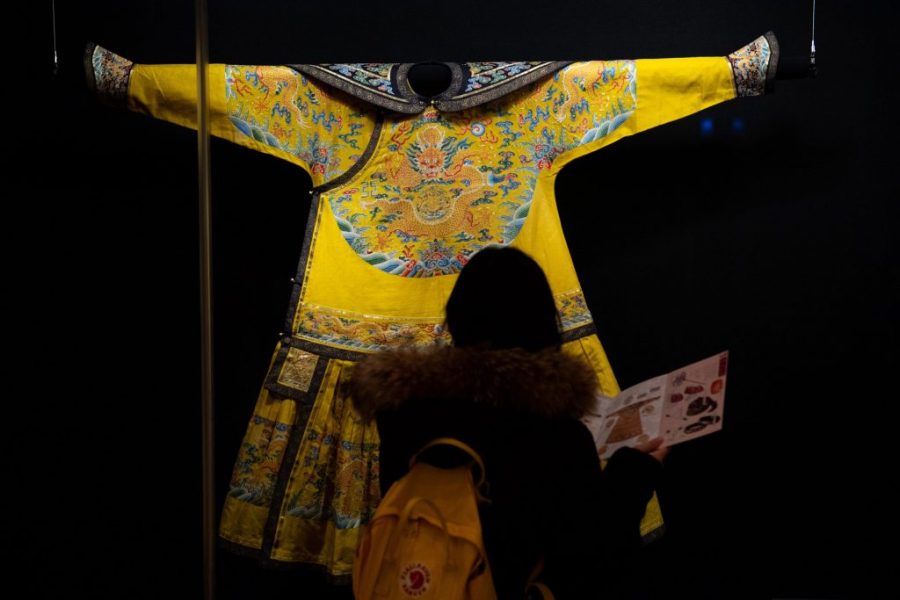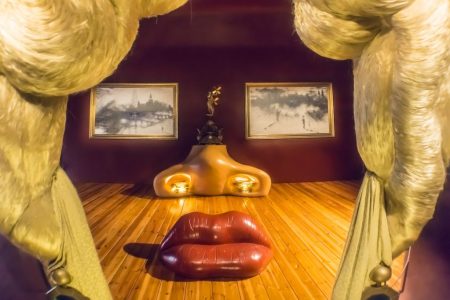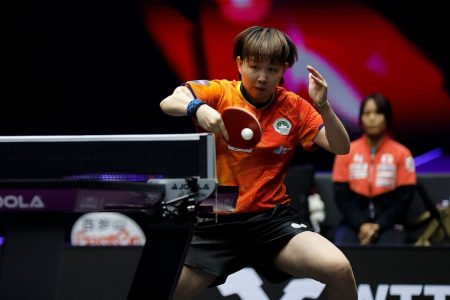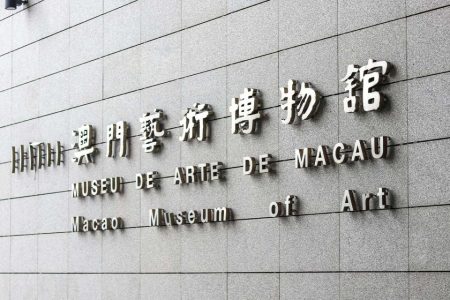Few cultures and countries around the world can match China when it comes to ancient regal costumes. The gilded royal attire of past kings and queens of Egypt, Japan, England, France, Spain and Portugal may come close. However, there’s something quite special about the costumes once worn by China’s emperors and empresses.
And in a new exhibition called “Stately Demeanour: Costumes of Qing Emperors and Empresses from the Collection of the Palace Museum” you can now see them in person at the Macao Museum of Art (MAM). The display, which is running until 14 March 2021, marks the first time the MAM has showcased the costumes of emperors and empresses. It has already been a huge success, welcoming more than 10,000 locals visitors during its first three weeks alone.
A collaboration between MAM and the Palace Museum, which sits within the Forbidden City in Beijing, the exhibition showcases about 90 sets of costumes and accessories worn by Qing dynasty emperors and empresses. Among the ensembles, there are 12 pieces that have never left the Palace Museum before.
“We started thinking about the exhibition’s theme around three years ago after the success of the ‘Qing palace TV’ dramas, which were Chinese TV shows based in the Qing dynasty that had so many viewers hooked,” says exhibition coordinator Irene Hoi Ian Chio. “In the past, we have exhibited calligraphy works and paintings from the Ming and Qing dynasties. This time, we wanted to share some [elements] of daily life with our audience.”
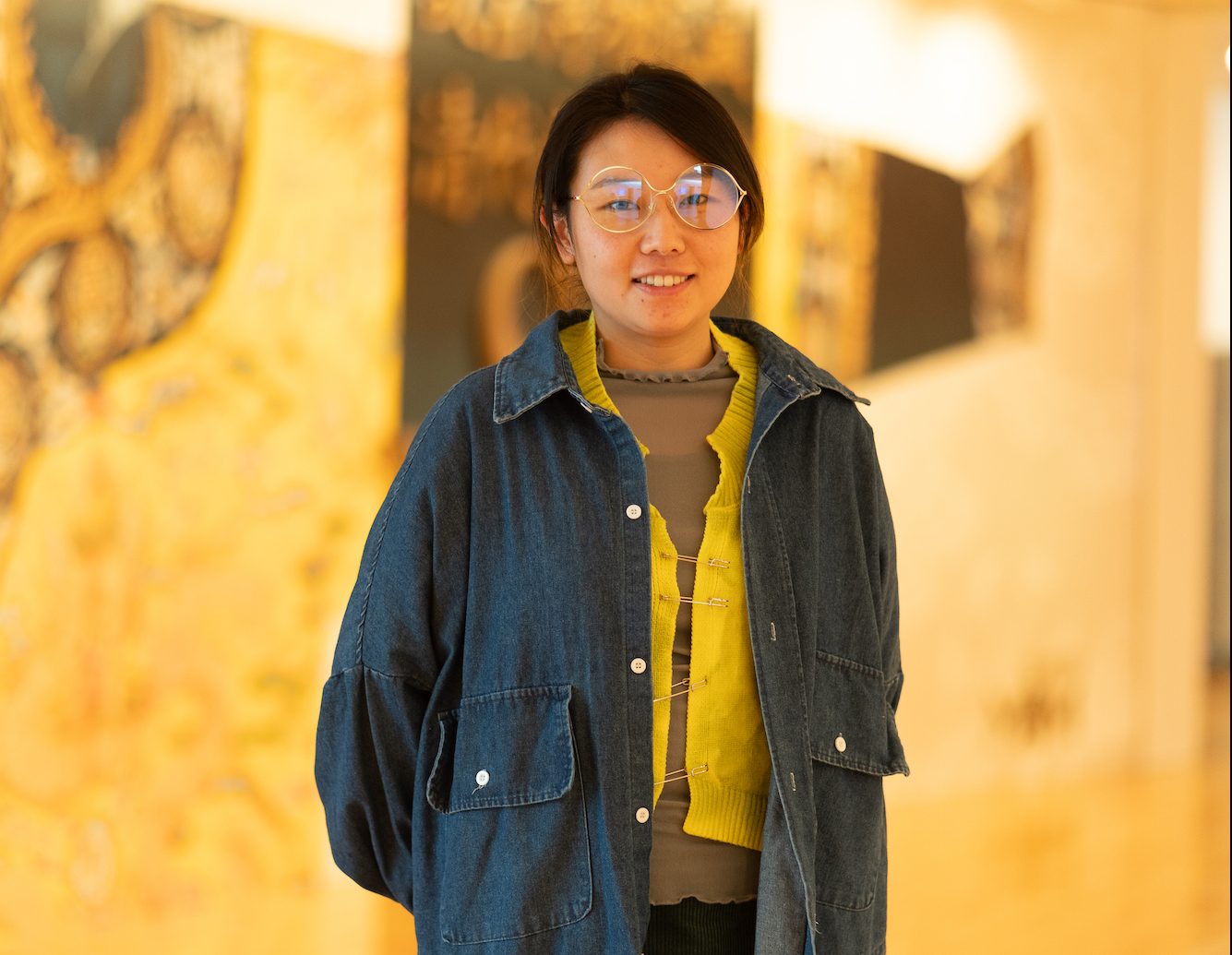
Plenty of drama
As China’s last monarchy, the Qing dynasty took place from 1644 to 1911 and left its mark on the hearts and minds of people across the globe.
Over the past few years, TV has done its part to keep it alive on the small screen. For instance, in 2018 two Chinese period dramas drew critical acclaim. The “Story of Yanxi Palace” was set during the sixth year of the Qianlong Emperor’s reign – he was the sixth emperor of the Qing dynasty – while “Ruyi’s Royal Love in the Palace” chronicled the marriage of the Qianlong Emperor and Hoifa Nara, an empress consort.
Both series offered captivating performances, but what frequently fascinated audiences most was the sumptuously detailed costumes on-screen.
“Visitors are interested because they’ve seen the beautiful details on the TV shows,” says Chio. “Among the exhibits are costumes that were actually worn by the real Qianlong Emperor, as well as the Kangxi and Jiaqing emperors, too.”
The devil really is in the detail, says Chio. The exhibition, which is split into several sections, covers official garments as well as military, travel, festive, leisure and everyday clothes. It takes its name from a quote from the preface of Illustrated Regulations for Ceremonial Paraphernalia of the Qing Dynasty, published in the 18th century, in which the Qianlong Emperor says: “Clothing is a manifestation of a dynasty”.
One can see the collision of cultures in the clothing – the garb and culture of the Han people with the skills of the Manchu people, such as archery and horsemanship. Details such as bow-shaped collars, hoof-like cuffs and saddle-inspired shoulder trims take on new meaning through this lens.
“Some people see the history behind the costumes but some see the motifs they like, such as flowers.”
– Irene Hoi Ian Chio
The costumes’ exquisite embroidery, precious stones and sumptuous fabrics have attracted many visitors to the exhibition. And, she adds, this influx of interest is helping to develop a new audience for the MAM.
“For our previous exhibitions of calligraphy works and paintings from the Ming and Qing dynasties, our talks have usually focused on the historical background of the works,” she explains. “They attracted high-brow art lovers or academics. However, this time we’ve gone for the basic elements of the costumes – the colours, motifs and production skills. Due to the variety of the exhibits, we can certainly satisfy visitors’ thirst for a deeper understanding of the Qing court costumes and accessories by introducing their motifs and history. That’s why the exhibition is popular.”
Of course, different visitors will see different things. “Some people see the history behind the exhibits but some see the motifs they like, such as flowers. They realise the embroidery of various flowers and some pay attention to the symbolic meanings behind the costumes.”
And since many visitors have seen these costumes on the TV series, they recognise them and feel intrigued to know about the different meanings. “Even the children who have visited the exhibition have learned about the history of the Kangxi and Qianlong emperors. They can be really interested,” adds Chio.
Exploring the exhibition
Colours and precious stones catch the eye in every corner of the exhibition. Official costumes, which emperors and empresses wore for major occasions like New Year’s, birthdays or sacrificial ceremonies, are among the most impressive. In this section, guests will discover a bright yellow gauze male court robe with embroidery of polychrome clouds and yellow dragons that was worn by the Qianlong Emperor. The bright yellow was an exclusive colour for emperors, while the 12 imperial symbols represent his noble qualities.
“As the [pieces] are made of silk and fabrics, they are sensitive to [different] temperatures,” says Chio. “Unlike calligraphy works and paintings, the costumes can’t be folded. Some of them are made out of endangered species, such as coral or the fur of sika deer … [They] needed a lot of care.”
Another exhibition highlight is the winter overcoat in black fox fur that was worn by the Jiaqing Emperor, who reigned between 1796 and 1820. “If you adjust the cutting slightly, this overcoat is fabulously trendy,” says Chio.
“Some of the pieces carry influences from Mongolia … and visitors can also appreciate the fascinating detailed embroidery, such as a tiny piece of moss on a rock or a dragon’s claws.”
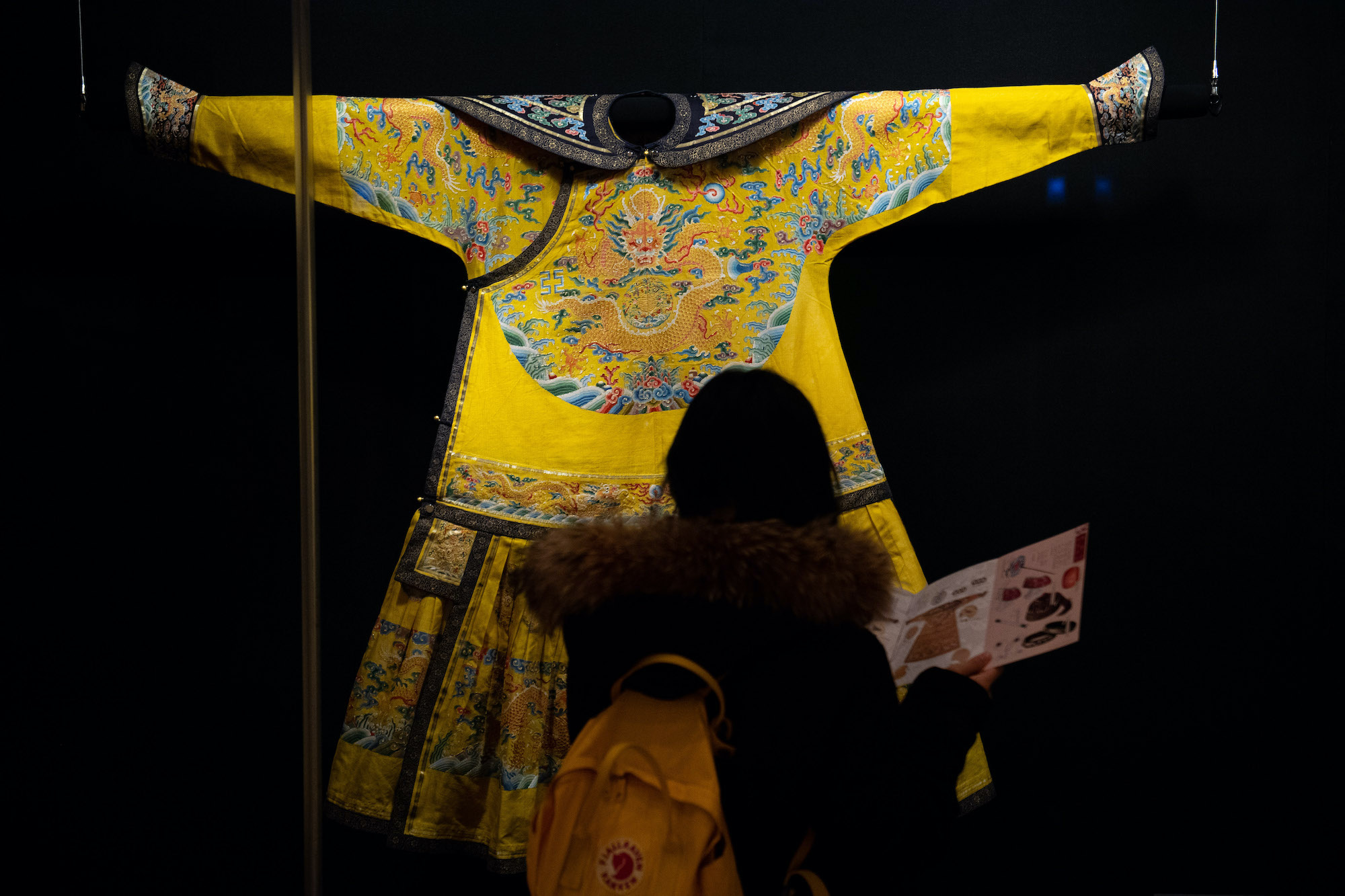
As one might guess, festive costumes were worn at celebrations and banquets. Among the exhibits is a cotton-padded bright-yellow satin male dragon robe with embroidery of polychrome clouds and a golden dragon. The robe, which belonged to the Yongzheng Emperor – who reigned between 1723 and 1735 – is an exceptional example of detailed embroidery. Another exhibit that catches the eye here is a court painting that illustrates the same emperor, who is regarded as the most diligent of the rulers in the Qing dynasty, in a festive costume reading a book.
Relatively subtle by contrast, royalty wore “regular” costumes for solemn occasions, such as sacrificial and fasting periods, honorary title conferment ceremonies, and the anniversaries of the deaths of previous emperors and empresses. The plain colours and self-patterned fabrics matched the tone of such events.
The highlight of the “military and travel” costume section is surely the armour suit with gold-woven brocade in herringbone patterns and gold plates, worn by the Xianfeng Emperor, who reigned between 1850 and 1861. This extremely delicate piece features tiers formed by a piece of gold-woven brocade in herringbone patterns. It exudes nobility, displaying black velvet on the trim and a light greyish-blue silk lining.
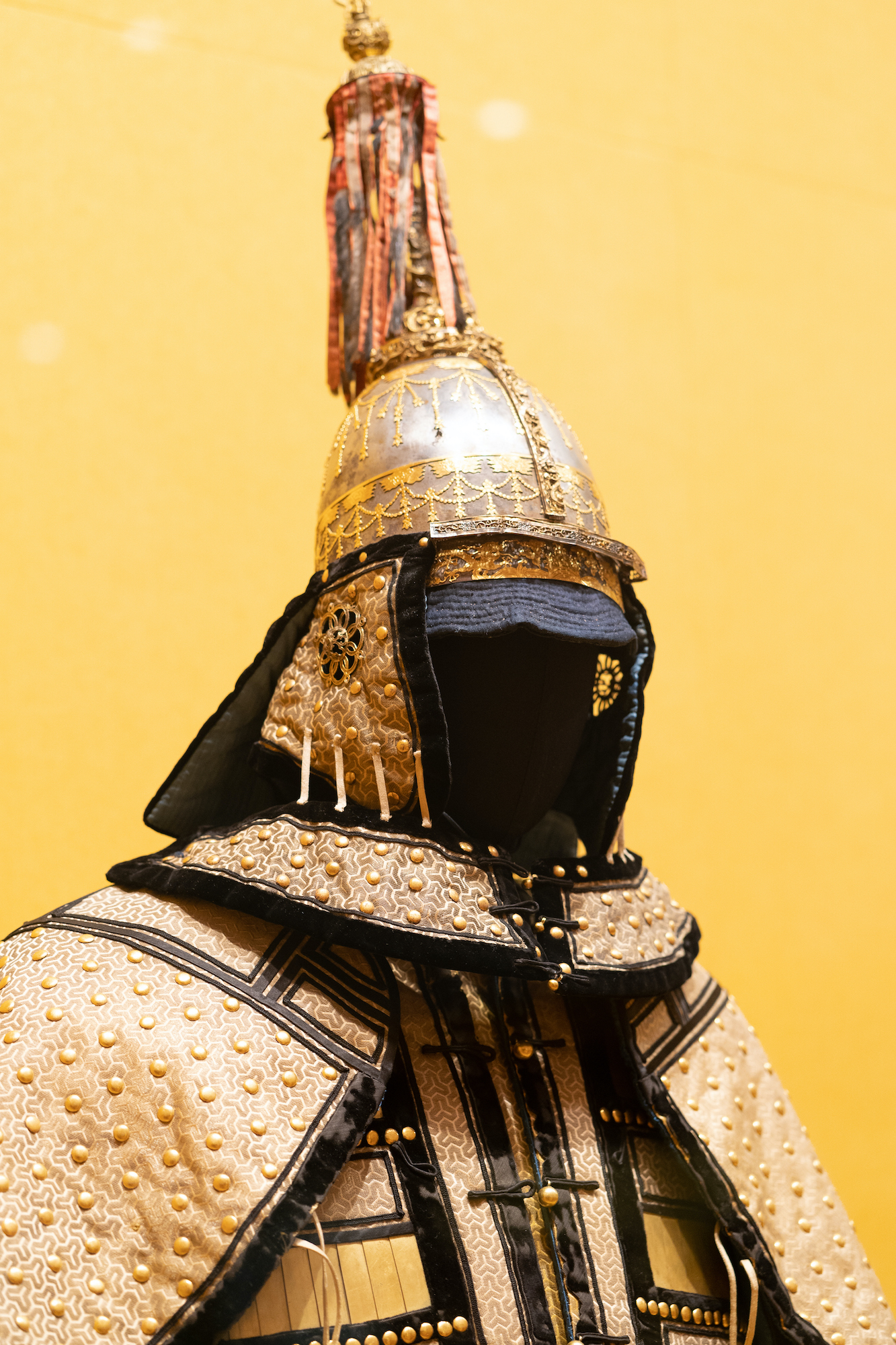
Another highlight in this section is actually not a costume. It’s a painting by Italian and Jesuit artist Giuseppe Castiglione and Chinese court artists, called “Portrait of Emperor Qianlong Chasing a Deer”. This piece demonstrates Castiglione’s trademark fusion of European and Chinese painting traditions.
‘Leisure’ costumes and accessories, worn during downtime, include outer gowns, vests, informal dresses, flowerpot-soled shoes and white jade earrings. The embroidery of the dresses reveals extraordinary craftsmanship and symbolic meanings.
Among the pieces is a lined yellow satin outer gown with butterfly and peony embroidery. Butterflies symbolise beauty and longevity and are widely used in Chinese opera and literature, while peonies suggest wealth. Both appeared regularly in costumes worn by imperial consorts.
Peng Liu, an assistant professor of the Faculty of Humanities and Arts at the Macau University of Science and Technology (MUST), says that the pieces on display in the exhibition will surely inspire art students and academics alike.
“From a broad perspective, the exhibited costumes and accessories all reflect the Chinese culture and social etiquettes that were prevalent at the time they were made,” he says. “If you look closer at their production methods, colour combination skills and embroidery, they are incredible source materials for academic research. I hope there are to be more such high-quality exhibitions in Macao.”
Don’t miss the “Stately Demeanour: Costumes of Qing Emperors and Empresses from the Collection of the Palace Museum” exhibition at the Macao Museum of Art until 14 March 2021.
